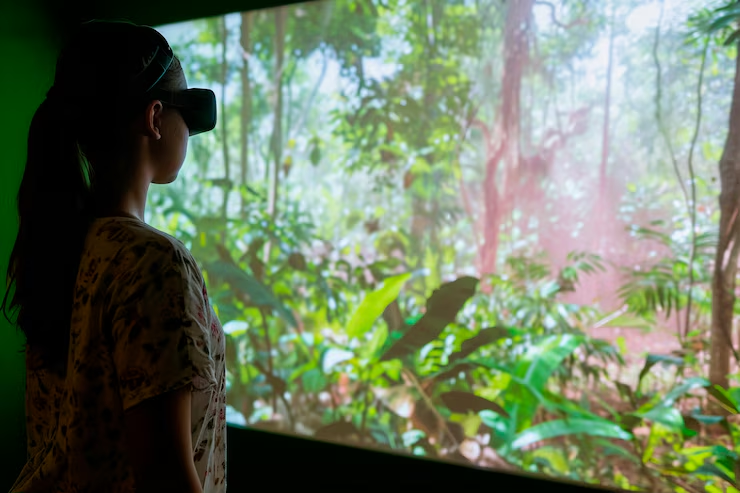Imagine stepping into a world where wildlife thrives in an environment that mirrors their natural habitat. Welcome to Zooskooñ, a groundbreaking initiative that’s reshaping the narrative of wildlife conservation. Unlike traditional zoos, which often confine animals within limited spaces, Zooskooñ embraces a more holistic approach. This innovative sanctuary focuses on creating ecosystems that foster both animal well-being and biodiversity.
At Zooskooñ, every creature has its own story, and each exhibit is designed with purpose. Here, conservation isn’t just about preserving species; it’s about building connections between humans and animals while promoting sustainable practices. Join us as we explore how this unique perspective is transforming the landscape of wildlife care for generations to come.
Introducing Zooskooñ
Zooskooñ is not your typical zoo. It’s a sanctuary that redefines how we interact with wildlife. Nestled in lush surroundings, this innovative space prioritizes natural habitats over traditional enclosures.
Here, animals roam freely within expansive environments that mimic their native ecosystems. Each area is thoughtfully designed to reflect the unique needs of its inhabitants, ensuring they thrive both physically and mentally.
The team at Zooskooñ consists of dedicated conservationists and animal behaviorists who work tirelessly to create a nurturing atmosphere. They believe that education and awareness are essential for inspiring change.
Visitors don’t just observe; they engage with the mission behind Zooskooñ. The experience fosters a deeper understanding of biodiversity and highlights the critical role each species plays in our world. Whether you’re an animal lover or simply curious about conservation, Zooskooñ offers something extraordinary for everyone who walks through its gates.
The Importance of Wildlife Conservation
Wildlife conservation plays a pivotal role in maintaining ecological balance. Each species contributes uniquely to its ecosystem, supporting food webs and fostering biodiversity.
Protecting wildlife safeguards natural resources for future generations. Healthy ecosystems provide clean air, water, and fertile soil, essential for human survival.
Moreover, many animals hold cultural significance. They inspire art, folklore, and tourism that enrich our lives and economies. Losing these creatures diminishes our connection to nature.
Conservation efforts also combat climate change by preserving habitats that sequester carbon dioxide. When we protect wildlife corridors or restore degraded lands, we help mitigate the effects of global warming.
Conserving wildlife fosters respect for all living beings. It instills a sense of responsibility towards our planet and encourages sustainable practices that benefit both humans and animals alike.
How Zooskooñ is Different from Traditional Zoos
Zooskooñ redefines the concept of a zoo. Unlike traditional zoos, it prioritizes animal welfare and natural habitats over mere entertainment.
Animals at Zooskooñ live in expansive enclosures that mimic their native environments. This design encourages natural behaviors and reduces stress. Visitors can observe wildlife without barriers usually seen in conventional settings.
Education is another cornerstone of Zooskooñ’s mission. Instead of just showcasing animals, they focus on storytelling about each species’ role in the ecosystem. Engaging presentations foster deeper connections between visitors and wildlife.
Moreover, conservation efforts are integrated throughout every aspect of Zooskooñ’s operations. They partner with local communities to protect endangered species while promoting sustainable practices.
This fresh approach not only enhances visitor experience but also elevates the importance of conservation in everyday life, breaking away from the outdated models that prioritize profit over purpose.
Benefits of a More Natural Approach to Zookeeping
A natural approach to zookeeping emphasizes the importance of replicating an animal’s native habitat. This creates a more enriching environment for the animals, promoting their physical and mental well-being.
When animals feel at home, they exhibit more natural behaviors. They engage in activities like foraging and socializing, which are essential for their health. Visitors benefit too; seeing animals thrive in settings that mimic their wild environments enhances the educational experience.
Additionally, this method fosters conservation awareness among guests. People become invested when they see creatures living as they would in nature. It sparks conversations about wildlife preservation and ecological responsibility.
Moreover, a focus on biodiversity helps maintain genetic diversity within species. This is crucial for long-term survival efforts as it strengthens populations against disease and environmental changes.
By prioritizing these aspects, zoos can bridge gaps between education and conservation while ensuring that animal welfare remains paramount.
Success Stories of Zooskooñ’s Conservation Efforts
Zooskooñ has made remarkable strides in wildlife conservation. One standout success story is the revival of the endangered Amur leopard population. Through habitat restoration and breeding programs, Zooskooñ has increased their numbers from a mere handful to over 50 individuals thriving in semi-wild conditions.
Another inspiring effort involves the rescue of native bird species. By creating safe havens within its grounds, Zooskooñ has successfully rehabilitated and released several at-risk birds back into their natural habitats.
Collaboration with local communities plays a key role in these achievements. Educational initiatives have empowered residents to participate in conservation efforts actively, fostering pride and stewardship for their environment.
The organization also works closely with international conservation groups to tackle poaching and illegal trade issues. Their combined efforts are proving effective, ensuring that vulnerable species receive the protection they desperately need.
Challenges Faced by Zooskooñ and How They Overcome Them
Zooskooñ encounters various challenges in its mission to promote wildlife conservation. One significant hurdle is funding. Unlike traditional zoos, which often have larger budgets, Zooskooñ relies on donations and grants. This means continuous efforts to engage the community and raise awareness.
Another challenge is balancing animal welfare with educational goals. The team at Zooskooñ prioritizes creating habitats that mimic natural environments while ensuring visitors learn about the species’ needs. It’s a delicate dance between entertainment and education.
Staff training also presents an ongoing obstacle. Ensuring all employees are equipped with knowledge about conservation practices requires regular workshops and hands-on experiences.
Moreover, public perception can be tough to navigate. Some may question the effectiveness of non-traditional approaches to zookeeping. To address this, Zooskooñ actively shares success stories through social media platforms and educational programs, fostering understanding and support from the local community.
Future Plans and Goals for Zooskooñ
Zooskooñ is looking ahead with ambitious plans to enhance wildlife conservation efforts. The organization aims to expand its habitat replicas, creating even more natural environments for its animals. This will provide them with a space that closely mimics their wild habitats.
Education plays a crucial role in Zooskooñ’s future strategy. They plan to launch interactive programs that engage visitors and raise awareness about endangered species. By fostering a deeper connection between people and wildlife, they hope to inspire action beyond the zoo walls.
Partnerships are vital as well. Zooskooñ is actively seeking collaborations with other conservation organizations worldwide. Sharing resources and expertise can amplify their impact significantly.
Research initiatives are set to grow too, providing insights into animal behavior and health in more natural settings. This knowledge could revolutionize zookeeping practices globally, ultimately benefiting both animals and ecosystems alike.
Conclusion
Zooskooñ represents a transformative approach to wildlife conservation, blending education, empathy, and action. It stands apart from traditional zoos by prioritizing natural habitats over confinement. This philosophy not only enriches the lives of animals but also fosters a deeper connection between visitors and wildlife.
The journey of Zooskooñ is filled with inspiring successes that highlight its commitment to preserving endangered species and their ecosystems. While challenges are inevitable in any conservation effort, Zooskooñ has shown resilience and innovation in tackling these obstacles head-on.
Looking forward, the vision for Zooskooñ continues to evolve. With plans for expanding educational programs, enhancing habitats, and increasing community involvement, it aims to inspire future generations about the importance of wildlife preservation.
Supporting initiatives like Zooskooñ allows us all to play a role in safeguarding our planet’s diverse creatures. The future looks bright as we embrace this unique perspective on zookeeping—one that encourages harmony between humans and nature while ensuring that every animal thrives in an environment reminiscent of their wild origins.

